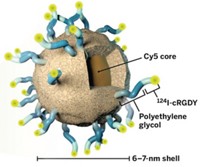Advertisement
Grab your lab coat. Let's get started
Welcome!
Welcome!
Create an account below to get 6 C&EN articles per month, receive newsletters and more - all free.
It seems this is your first time logging in online. Please enter the following information to continue.
As an ACS member you automatically get access to this site. All we need is few more details to create your reading experience.
Not you? Sign in with a different account.
Not you? Sign in with a different account.
ERROR 1
ERROR 1
ERROR 2
ERROR 2
ERROR 2
ERROR 2
ERROR 2
Password and Confirm password must match.
If you have an ACS member number, please enter it here so we can link this account to your membership. (optional)
ERROR 2
ACS values your privacy. By submitting your information, you are gaining access to C&EN and subscribing to our weekly newsletter. We use the information you provide to make your reading experience better, and we will never sell your data to third party members.
Biological Chemistry
A Step Forward For Quantum Dots
Nanomedicine: Researchers see no negative health effects of the tiny particles in monkeys
by Lauren K. Wolf
May 28, 2012
| A version of this story appeared in
Volume 90, Issue 22

For the first time, researchers have tested the safety of quantum dots in monkeys, and the results are promising (Nat. Nanotech., DOI: 10.1038/nnano.2012.74). Monkeys’ genetics and metabolism are close to those of humans; nevertheless, toxicity studies in nonhuman primates might not predict how exposure will affect humans.
Debate has raged over the toxicity of quantum dots, the semiconducting nanocrystals that scientists hope to one day use as light-activated diagnostics and disease therapies for humans. In previous benchtop studies, quantum dots—often containing the toxic element cadmium—killed cells to which they were added. But when injected into mice and rats, the tiny particles didn’t trigger any detectable negative reactions.
Because of these conflicting findings, some scientists have hesitated to continue developing quantum dots as nanomedicines.
Now, a team of researchers in China, Singapore, and the U.S. has shown that, when injected into rhesus monkeys, zinc sulfide-capped cadmium-based quantum dots encapsulated in phospholipid micelles cause no health problems over a 90-day monitoring period. During that time, the monkeys’ blood and biochemical markers remained normal, and their organs didn’t become inflamed.
The quantum dots collected in the monkeys’ bodies and remained intact for the 90 days, says Mark T. Swihart, a member of the research team and a chemical engineer at the State University of New York, Buffalo. “Nearly all the initial dose of cadmium was still present in a few of the monkeys’ organs,” he says. “We could still see the quantum dot luminescence” in their livers and spleens.
“This study clearly reopens the possibility of using quantum dots for in vivo clinical applications,” says Warren Chan, a biomedical engineer at the University of Toronto. “But one can’t make the generalization that all quantum dots are nontoxic” from this research. Quantum dot formulations vary by their elemental compositions and surface coatings, Chan argues, so each one must be tested individually.
The researchers, including Paras N. Prasad of SUNY Buffalo, emphasize that further testing is needed to determine the long-term health effects of the particles and to learn whether the dots eventually clear the monkeys’ bodies.



Join the conversation
Contact the reporter
Submit a Letter to the Editor for publication
Engage with us on Twitter